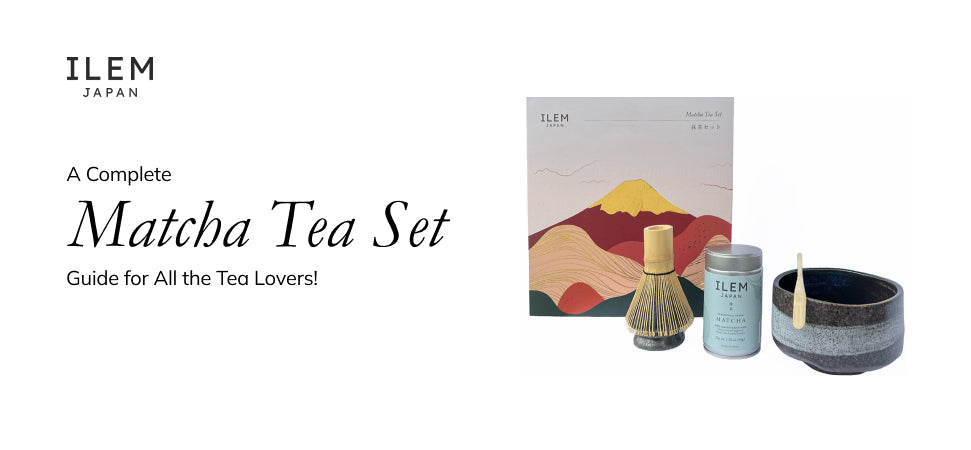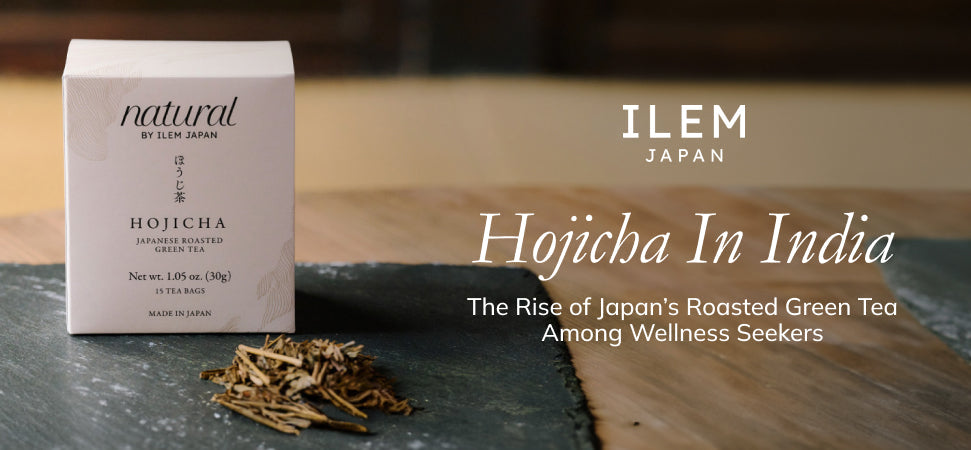Moisturizer vs. Serum: When to Use Each in Your Routine
Serums and moisturizers are the key steps in a skincare routine. They have the power to transform your skin 180 degrees, thanks to their powerful combination of ingredients. And the best part? They're multi-functional, which means they offer multiple advantages.
Besides being one of the most talked about products, they're also highly confused. And the confusion is about the following two things:
- When do you use them in your skincare routine?
- Is it okay if you skip one of the two?
And if you are confused, too, this blog is for you.

Today, we're going to clear this confusion for you and tell you exactly how to include them in your morning and nighttime skincare routine.
Understanding Your Skin's Needs
Every skin has unique needs. Wondering why? Well, because your skin type is a result of many factors like genetics, lifestyle, diet habits, and more. As a result, there's no 'one-size-fits-all" for skincare. There must be a personalized approach. Moreover, it's possible that your skin requires just one of these two products or both.
So how do you decide? One is by understanding your skin's needs. Two, by knowing the similarities and differences between these two products. Here's a quick rundown:
Skin Types and Their Needs
There are four major skin types – dry, oily, combination, and sensitive. Here are the main characteristics of each of these types:
Dry skin type
- Feels tight and rough
- It may appear dull and flaky
- It is more prone to wrinkles and fine lines due to a lack of moisture
- May overproduce oil to compensate for the dryness.
Now, what does it need? Intense hydrating moisturizer.
Oily skin type
- Looks shiny, typically in the T-zone (forehead, nose, and cheeks)
- Pores may appear larger
- More likely to develop blackheads, acne, and whiteheads
As a result, a face moisturizer for oily skin focuses on oil regulation.
Combination skin type
- It features a mix of dry and oily areas
- The oily areas tend to be oilier, and the dry area tends to be drier
Consequently, a balanced approach is needed to meet the needs of both areas.
Sensitive skin type
- More prone to redness and itchy
- May experience a burning sensation
- Needs to be more careful when trying new products
- Sun exposure and certain ingredients can trigger the skin easily
So, how do you meet its needs? Choosing a fragrance-free moisturizer with calming, gentle ingredients.
Moisturizer vs Face Serum: Similarities
- Both provide moisture to the skin, giving it a supple complexion
- Offer barrier support to the skin, strengthening it against environmental stressors
- It can help fight wrinkles and fine lines
- Both come in a variety of formulations to meet the needs of diverse skin types
Moisturizer vs Serum: Differences
There are differences between moisturizers and serums. Let's have a look at them in detail.

Moisturizers: What are they and their types?
Moisturizers are essential for maintaining skin health and complexion. Their primary function is to restore and retain moisture by preventing water loss from the skin and attracting moisture from the environment.
They work by creating a protective barrier on the skin's surface to enhance:
- Hydration
- Elasticity
- Texture
The best thing about face moisturizers is that they exist in different formulations and textures. Here's a quick rundown:
Cream
Creams have a rich and emollient texture, which makes them ideal for dry and mature skin. Cream face moisturizers are formulated with heavy ingredients like shea butter and cocoa butter.

As a result, they offer deep hydration and are excellent for fighting intense dryness. Our Moisturizing Cream is specially formulated to leave you with plump, youthful skin.
Lotion
Lotions have a moderate consistency that falls between creams and gels. They are known for striking balance and offering hydration without overwhelming the skin. Moreover, they're highly versatile and suitable for almost all skin types, including combination skin.

ILEM JAPAN offers Body Lotion that is infused with Japanese Green Tea to give instant hydration.
Gel
Gels have a lightweight and water-based texture, making them ideal for oily and acne-prone skin. What makes them unique is their ability to offer hydration without feeling too heavy on the skin or creating greasiness.

ILEM JAPAN's Rejuvenating Night Gel revitalizes your skin while you sleep.
Key Ingredients to Look for in a Moisturizer
Now that we've understood the types of face moisturizers let's go over the ingredients you should look out for in a moisturizer.
- Humectants attract and retain moisture from the environment. These include hyaluronic acid and glycerin.
- Emollients to smoothen the skin's surface. For instance, shea butter and jojoba oil.
- Occlusives are for creating a protective layer on the skin's surface and sealing it in moisture. For example, beeswax and petroleum jelly.
- Antioxidants, like Vitamin E and green tea extract, fight free radicals and premature aging.
- Ceramides support barrier function and prevent moisture loss.
Serum: What are they and their types?
Face serums are a lightweight, concentrated formula that is designed for quick absorption. They aim to target specific issues that your skincare routine otherwise is unable to completely target. What makes them stand apart from others is their formulation of potent ingredients. Some of these active ingredients include:
- Vitamin C
- Peptides
- Retinoids
- Niacinamide
- Green Tea
Just like moisturizers, face serums are of different types. They can be differentiated as hydrating, anti-aging, and brightening.
As the name suggests,
- Hydrating serums, like Hyaluronic acid serum, boost and retain moisture, plump the skin, and improve overall hydration levels.
- Anti-aging serums target fine lines, wrinkles, and other signs of aging for youthful skin.
- Brightening serums, like our Vitamin C serum, even out skin tone, reduce dark spots, and improve overall radiance.
When to Use Moisturizer?
A moisturizer finds its place in your morning skincare routine as well as your nighttime skincare routine. In fact, a routine without a moisturizer would be incomplete. It is the last step in your routine to seal in all the moisture and the goodness of all other products.

In the morning routine, a moisturizer, with other products, protects your skin and prepares it for the day. Some moisturizers may also contain ingredients that shield your skin from the harsh rays of the sun and reduce their impact on the skin. Furthermore, moisturizers prepare the skin for effortless makeup application, helping you avoid a cakey makeup look.
Similarly, for an evening routine, the moisturizer is designed to promote repair of the skin. It enhances the impact of other products like serums.

Additionally, a moisturizer becomes extremely important when the weather changes. For instance, when the weather shifts from humid to hot, a moisturizer formulated with hydrating ingredients helps keep the skin hydrated.
When to Use Serum?
Unlike moisturizers that are a part of every skincare routine, serums find a special place, especially if your current routine is unable to meet your skincare needs. You may wonder why. This is because serums contain specific active ingredients that offer targeted treatment.

Serums that are designed for use in your morning routine may focus more on boosting hydration and even toning your skin. Similarly, serums designed for evening routines focus on concerns like pigmentation, oil regulation, collagen production, aging, and cell turnover. These serums support your skin's renewal and rejuvenation while you rest so that you wake up with a refreshed complexion.
The Synergy of Moisturizer and Serum
The dynamic duo of the face moisturizer and serum unlocks the potential of your skin. While serums deliver targeted action, moisturizers act as protectors, forming a protective barrier on your skin. The key is to layer them correctly.
Start with your serum and gently pat it into your skin. The lightweight formula is designed for quick, deep absorption. Give your skin some minutes, and then go in with your moisturizer. Again, don't rub it in. Gently pat it into your skin in an upward circular motion.
Now, while their combination works wonders, there are a few things that you need to take care of like:
- Compatibility of ingredients: Make sure the ingredients of the products go together. Certain combinations can lead to irritation and adverse reactions. So make sure you research well.
- Overlaying of the products: a simple routine yields better results. So avoid using too many products at once.
Choosing the Right Products for Your Skin
Match the ingredients in your moisturizer and serum to your skin type. Here are some suggestions we have for you:
- Dry skin: Hyaluronic acid, glycerin, and ceramides
- Oily skin: Salicylic acid or niacinamide
- Combination skin: Salicylic acid, vitamin C and retinol
- Sensitive skin: Chamomile or aloe vera
Crafting Your Perfect Skincare Routine
By understanding how moisturizers and serums work and how to layer them, you can improve your skin's natural texture and functioning. The only thing you need to do is realize what your skin needs – moisturizer or serum. Mind you, your skin may need both, and that's okay. Your skin is still unique.
Remember, your healthy, radiant skin is just one decision away!
👉 Buy Products worth 5000 and get a gift worth 1500 for free










